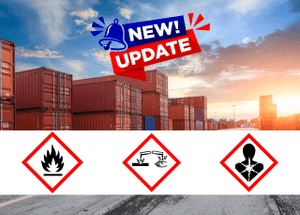OSHA’s PPE Laboratory Standards

In our previous blog post on laboratory safety requirements and standards, we discussed OSHA’s general duty clause, laboratory standard, blood borne pathogens standard, lockout/tagout standard, and the hazard communication standard and updates expected for GHS. In addition to these, laboratories concurrently must adhere to physical protection standards, outlined by OSHA into the categories of general PPE, eye and face protection, respiratory protection, and hand protection. Many of these are responsible for some of the most frequently cited workplace safety violations year after year, all of which can be prevented and minimized with the proper training, labels, signs, and procedures.
The Personal Protective Equipment (PPE) Standard
OSHA’s 29 CFR 1910.132 requires that employers provide and pay for PPE
and ensure that it’s used wherever “hazards of processes or environment,
chemical hazards, radiological hazards, or mechanical irritants are encountered
in a manner capable of causing injury or impairment in the function of any part
of the body through absorption, inhalation or physical contact.”
In order to determine whether and what PPE is needed, the employer must “assess
the workplace to determine if hazards are present, or are likely to be present,
which require the use of PPE,” per 29 CFR
1910.132(d)(1). Based on that assessment, the employer must take the
following steps to ensure full compliance with OSHA:
- Select appropriate PPE (e.g., protection for eyes, face, head, extremities; protective clothing; respiratory protection; shields and barriers) that will protect the affected worker from the hazard (per 29 CFR 1910.132 (d)(1)(i))
- Communicate selection decisions to each affected worker (per 29 CFR 1910.132 (d)(1)(ii))
- Select PPE that properly fits each affected employee (per 29 CFR 1910.132(d)(1)(iii).)
- Provide training for workers who are required to use PPE that addresses when and what PPE is necessary, how to wear and care for PPE properly, and the limitations of PPE (per 29 CFR 1910.132(f)).
The Eye and Face Protection Standard
29 CFR 1910.133requires employers to ensure that each affected worker uses
appropriate eye or face protection when exposed to eye or face hazards from
flying particles, molten metal, liquid chemicals, acids or caustic liquids,
chemical gases or vapors, or potentially injurious light radiation. In 2022,
these particular violations across workplaces were the 9th most common safety violation cited by OSHA at a count of 1,582.
The Respiratory Protection Standard
29 CFR 1910.134 requires that a respirator
be provided to each worker when equipment
is necessary to protect the health of such individual. The employer must
provide respirators that are appropriate and suitable for the purpose intended,
as covered in 29 CFR 1910.134(d)(1). This
exact standard was one of the most cited violations in 2022, with 2,430
violations. Employers are responsible for establishing and maintaining a
respiratory protection program, as required by 29 CFR 1910.134(c), which includes, but is not limited to, the
following:
- Selection of respirators for use in the workplace.
- Medical evaluations of workers required to use respirators.
- Fit testing for tight-fitting respirators.
- Proper use of respirators during routine and emergency situations.
- Procedures and schedules for cleaning, disinfecting, storing, inspecting, repairing and discarding of respirators.
- Procedures to ensure adequate air quality, quantity, and flow of breathing air for atmosphere-supplying respirators.
- Training of workers in respiratory hazards that they may be exposed to during routine and emergency situations.
- Training of workers in the proper donning and doffing of respirators, and any limitations on their use and maintenance.
- Regular evaluation of the effectiveness of the program.
The Hand Protection Standard
29 CFR 1910.138 requires employers to select and ensure that workers use
appropriate hand protection when their hands are exposed to hazards such as
those from skin absorption of harmful substances, severe cuts or lacerations,
severe abrasions, punctures, thermal burns, chemical burns, and harmful
temperature extremes. They must also base the selection of the appropriate hand
protection on an evaluation of the performance characteristics of the hand protection
relative to the tasks being performed, conditions present, duration of use, and
the hazards and potential hazards identified.
In addition to all of the standards listed above and in our previous post, other OSHA regulations that can be readily applied to laboratory safety include:
- Electrical Safety (29 CFR 1910 Subpart S-Electrical)
- Fire Safety (Portable Fire Extinguishers standard, 29 CFR 1910.157)
- Slips, Trips & Falls (29 CFR 1910 Subpart D – Walking-Working Surfaces, Subpart E -Means of Egress, and Subpart J - General Environmental Controls)
Compliance Expertise to
Meet Your Needs
Reach out to us here at Clarion Safety Systems for more laboratory and equipment safety insight – including how we can
help create custom labels, signs and tags in line with your injury and illness prevention program, as well as
customization related to symbols and site-specific signage, including custom lab door signs.



